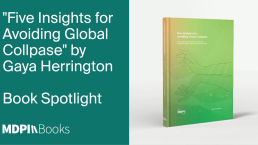
What is Open Access Book Publishing?
The open access movement has revolutionised the way we access academic research. Once hidden behind expensive paywalls, academic research is becoming more and more accessible under open access publishing models. Academic books are also being made freely available as open access book publishing grows worldwide.
In this article, we’ll take a short look at the history of open access and observe the necessity for accessible long-form content, explain what open access book publishing is, and compare open access book publishing with traditional book publishing.
A short history of open access
Open Access is an online movement that seeks to make research freely and immediately available to the reader. But what created the need for this movement?
Serials Crisis of the 1990s
The beginnings of the open access movement can be traced back to the mid-1990s. Rising journal subscription prices led to what was known as the serials crisis. This was where library budgets failed to meet these steep costs, leading to the cancellation of journal subscriptions.
2002 Budapest Open Access Initiative (BOAI)
This difficulty of providing scholars with new research because of funding limitations led to the formation of the Budapest Open Access Initiative in 2002.
The BOAI’s declaration stated that ‘the literature that should be freely accessible online is that which scholars give to the world without expectation of payment.’ The initiative called on governments, universities, libraries, publishers and scholars to help build a future in which research and education would be freely accessible to all.
Following the BOAI, the Directory of Open Access Journals (DOAJ) was launched in 2003. The DOAJ acts as a central directory for open access journals.
2010s: A shift to open access books
By the 2010s, however, attention shifted to making academic books as accessible as academic journals.
In 2012, OAPEN launched the Directory of Open Access Books (DOAB). The DOAB is a counterpart to the DOAJ and is dedicated to indexing peer-reviewed open access books. This directory aimed to increase the discoverability of OA books. To achieve this, it began hosting academic books and their metadata.
Where are we now?
At the beginning of 2024, UK Research and Innovation (UKRI) announced their open access policy for long-form outputs. The policy requires UKRI-funded authors to make their Monographs, Book Chapters and Edited Books open access within 12 months of publication.
In Switzerland, the Swiss National Open Access Strategy has recently been revised. The new document outlines the need for a coordinated approach to promoting open access for long-form publications. The strategy suggests that negotiations with service providers and publication infrastructures and services must adapt to ensure the flourishing of long-form publications within open access publishing.
As we can see, open access book publishing is still evolving. Now we know more about the history of open access and open access books, let’s take a look at some of the fundamentals and principles of this emerging model.
What is open access book publishing?
Open access book publishing involves making academic books freely available to the public without the traditional barriers of access, such as purchase costs or restrictive licensing agreements.
The model is complex and extensive, however, especially compared to open access journal publishing. The open access book production process requires the coordination of multiple departments, such as book editing and design. This ensures the author’s vision is fully realised. Open access books have a longer production process (on average 18 months) than open access journals. This much more intensive process means that open access publishers have smaller outputs than open access journals.
Sustaining this extensive publishing model are book processing charges (BPCs). BPCs are payments made to a publisher to cover the costs involved in publishing a book as open access. They are usually fronted by an author’s funding body or institution. An example of a long-form publication, the Monograph, costs approximately €8,500 to produce.
The cost of funding an open access book may be higher than an article. Yet the principles of open access emphasise the necessity of making them accessible. Open access books contribute significantly to the advancement of knowledge within a specific discipline, enriching the intellectual landscape both for readers and other authors.
These are the fundamentals and principles of open access book publishing. But what are the benefits of OA book publishing compared to traditional book publishing?
Open access book publishing vs. traditional book publishing
Open access book publishing and traditional book publishing share some similarities. The author completes a manuscript, submits their proposal to a publisher, and signs a contract to publish their book.
The main difference is that within OA book publishing, books become freely and immediately available online. Here at MDPI Books, this is possible by publishing our books as Gold OA. This means there are no paywalls or embargo period.
But how does this accessibility distinguish OA book publishing from traditional book publishing?
Visibility
Due to their content being easier to disseminate and access, open access books benefit from greater visibility than non-open access books. In fact, open access books are, on average, downloaded seven times more, cited 50% more, and mentioned online ten times more. Furthermore, last year a study found that open access publishing dramatically improves the visibility and value of chapters in edited books.
With these findings, it’s clear that open access books also benefit from the same community-driven methods of circulation as open access journals.
Immediacy
Open access books can be readily downloaded and read by anyone with an internet connection. Non-open access books however are only available via the conventional routes, such as via a bookstore or library. These routes naturally come with physical and time constraints when it comes to stocking and ordering copies.
The immediacy of open access books is a great benefit to researchers. Any researcher can easily find and build upon an almost endless supply of research. In turn, this advances the research base in a much faster and more egalitarian way.
Copyright
In traditional book publishing, the publisher typically owns the copyright to a book.
However, in open access book publishing the author retains full control over their work. A Creative Commons license makes this possible. A Creative Commons license gives the public a standardised way to use and reproduce your work.
Royalties
An argument against open access is that it stops authors from earning royalties on sales. This isn’t exactly the case, however.
It’s true that authors of non-open access books can make royalties from sales. Royalties are often meager, though, and the benefits of publishing a book as open access may even outweigh the risks to sales.
In addition to greater reach and impact, publishing as open access may also increase the sales of non-open access books too.
Moving forward with open access book publishing
Despite its clear advantages, open access book publishing still has a long way to go.
With no dominant business model, the pace of research is being held back by the comparatively slower implementation of policies and dedicate funds.
Open access book publishing is a young movement, and these models take time to iron out any weaknesses. Yet the tide does seem to be turning in favour of open access books, as we’ve seen with the UKRI open access policy and the Swiss National Open Access Strategy both coming into effect this year.
MDPI Books is committed to advancing the development of open access book publishing. The MDPI Books blog, launched this year, aims to further increase awareness surrounding open access book publishing.
If you’re an author who’d like to benefit from the many advantages open access book publishing has to offer, see our Publish with Us section.









